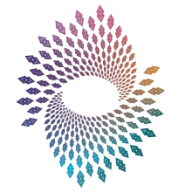John Tse Tow: Empowering Business Leaders in Asia and Beyond
- POSTED ON JULY 06, 2022

John Tse Tow owns John TT Consulting, a coaching firm helping leaders connect to consciousness. He is also a Certified Professional Co-Active Coach and a faculty member of both the Co-Active Training Institute and the Leadership Circle.
To be a strong force of positive change in the world, John uses his 20 years of experience in global financial institutions and coaching to help leaders, especially emerging Asian leaders. John’s multilingualism has allowed him to coach and train in a number of Asian countries in English, Mandarin, Cantonese, and Malay.
Committed to bringing leaders to a greater level of consciousness, John has guided and mentored over 200 leadership teams through the VUCA — volatility, uncertainty, complexity, and ambiguity — environment.
Join us as John talks about leadership, empowerment, and reaching a higher level of purpose.
What was your background before Co-Active? What was your life like and what led you to discover coaching?
I went to a university in Brisbane, Australia. Soon after, I began my corporate banking job with HSBC, and I was extremely fortunate to be a part of the learning development team. I spent 3 years in Brunei before being transferred to Shanghai, where I stayed for 10 years. For 3 of those years, I stayed at HSBC. Then I joined J.P. Morgan as the Head of Learning and Development for the Chinese franchise, where I was responsible for learning and development for the entire company in mainland China.
It was during this time that I began to wonder where I wanted to go and whether I wanted to stay in banking. I had been in the banking industry for about 9 to 10 years already by this point. I asked myself if I wanted to stay in this lane. I realized that my answer was no.
“I was sure that I was looking for something. I’ve always been interested in learning improvement, so coaching was something I was considering.”
Schouten, one of CTI’s Chinese partners, called me up to say they had an offer for me to join the company as the Director of Learning & Development, overseeing various coaching and leadership programs. I thought that was something I really wanted to do, so I joined. Because they were CTI’s Chinese partners, learning about Co-Active was a perfect fit for me, and it was a necessary part of my job. So I began my first Fundamentals course in 2015.
Could you tell us about your Fundamentals course experience? How was your first day? What do you recall about your first experience with Co-Active?
I remember a few details, as well as various emotions that I felt during that time. First, I knew how to ask powerful questions. After a while, I began to suspect that this was more than what I had expected. It’s quite polished — all of the awareness, movement and coaching were new to me. I recall feeling in myself a hint of arrogance as well. During one of the exercises, when I was coaching, one of the co-leaders made a remark about me, and I nearly exclaimed, “back off!” That is something I remember to this day.
I had worked in banking for 10 years and had to look and act a specific way throughout that time. My team members thought I was too prim and proper. As a result, my team members suggested that I pretend to be a peasant boy, like those farmers in the countryside, the ones who labor in the fields.
Were you hooked right away after taking Fundamentals? Did you know you were going to get certified?
It happened gradually. I knew I had to complete the entire intermediate series because it was part of my job. However, I was hesitant to pursue certification even though I knew I would eventually. Everyone is hesitant and afraid — and the same was true for me.
Clark Friedrichs, then a member of the faculty development team, together with a few senior faculty members conducted an audition for CTI leaders. I was hesitant — I had not yet completed certification, and I had only completed the Synergy course not long ago. My coworkers encouraged me to give it a go; they said I had nothing to lose anyway. With that mindset, I just walked in and performed. And I made it through. However, before I could lead from the front of –the room, I had to complete my certification and CTI Leadership program. That was when I decided, I just had to complete it.
What became your coaching style, focus, or niche after you got your certification? Who are your typical clients?
I always brand myself as a playful coach. I sometimes jokingly call myself the Prince of Playfulness. High energy, fun, and play are usually what you see in my style of coaching. I always tell my clients that coaching is not serious business. The more fun we have, the more endorphins we create in our brains, the more effective the coaching can be. But if they are looking for a serious coach in a suit and tie, they might have to look elsewhere.
My typical clientele consists of younger corporate executives because of my experience in the financial industry. I completed the Leadership Circle certification in 2015, which I am also a faculty member of. So since then, I mostly work with corporate executives between the ages of 25 and 55.
What are the common challenges you encounter among leaders in high-stress roles and how is Co-Active Coaching effective for that group?
“I usually start with the Leadership Circle Profile and then go onto the Co-Active model with people in high-stress roles. This group of people tends to come from the ‘Reactive’ which is a fear-based and saboteur-led mindset. For the most part, we enable them to be in the ‘Creative’ — that is, the purposeful drive operating system.”
Many of the leaders I work with tend to be in the transition stage from Reactive to Creative. These leaders may already have an idea of their leadership purpose as well as the values they choose to honor. However, their center of gravity may still be in the Reactive, as they are under constant stress. Many of them have demanding jobs — KPIs to meet, deadlines to hit, a company to run while trying to raise a family and manage their personal lives all at the same time. It is nearly like competing for the Olympics every single day.
When we combine the Leadership Circle with the Co-Active model, we come from all the 4 cornerstones, 5 contexts, 3 principles, and a designed alliance. This model acts as the technology that we apply to coach our clients to move into the Creative. For instance, by applying the cornerstone of “focus on the whole person,” we unearth the saboteurs that hook the clients to their self-limiting assumptions that might have derived from their childhood and early career. And to counter that, we point the clients to their Leader Within and allies, so that a new identity may emerge in the Creative. That is why I believe the Leadership Circle and Co-Active coaching complement one another and fit like a glove.
Do you believe that people in high-stress jobs are particularly susceptible to sabotage? Or is everyone vulnerable to sabotage?
“I think everyone is vulnerable to sabotage. Our saboteurs are part of our human programming.”
Without judging saboteurs, I believe they are here to teach us a lesson: that we are programmed to learn through adversity. If we have a positive relationship with our saboteurs, it may have the power to move us forward. Saboteurs threaten everyone, especially people in high-stress positions because they must always dress well, make money, and be very motivated — almost to the point of perfection.
I believe that coaching is revolutionizing our internal operating system. I believe that as coaches, we are called forth to work with humanity to upgrade this system. Imagine a world where everyone is free from self-inflicted fear, limiting assumptions, and saboteurs. What are the possibilities available to all of us?
How does Co-Active coaching help executives in high-stress jobs?
“The Co-Active coaching model focuses on the entire person. When we coach people, we don’t just look at the executive; we look at the full person: mind, body, spirit, and heart. We also consider the executive as a father, mother, parent, wife, or husband.”
Though we are coaching the executive, we are also concerned with the whole person. Every aspect of the benefits from the entire process.
For example, I previously coached a very senior executive who looks after the entire Hong Kong and Macau business for her organization who was highly Reactive. Clearly, her high scores in Reactive had a negative impact on her leadership effectiveness. In one of our sessions, I conducted a visualization exercise with her — one of the tools in Fulfillment. She immediately recognized there are various components of herself that she wasn’t activating. She realized that she over-relied on her rational mind and willpower and that she needed to be smart and strategize. That was what held her back in the Reactive. When I helped her activate her spiritual side, she was mind-boggled with the thought that she could use her heart and spirit to lead people. The whole time, I stood firmly on all 4 cornerstones of the Co-Active model.
Why should people choose Co-Active coaching over other coach training options? What makes CTI unique?
From my experience in working with coaches from other coaching schools, I find that Co-Active coaches are trained to focus on the whole person — their mind, body, heart, and spirit. Other institutions, on the other hand, I find tend to focus heavily on the mind and put less emphasis on other aspects of the client.
“In CTI, we believe that we can channel our emotions and generate energy from them. Using the Co-Active model, we empower our clients to channel their emotions into actionable energy.”
In the model, we have the principle of “process,” where we work with the client’s emotions and energy pattern. This is particularly useful when a client is stuck with heavy emotions. What I find is that Co-Active coaches tend to be more fluid in working with emotions and stuck energy, while other coaches tend to avoid going into this space.
However, these are not sweeping assertions. I also believe there are also many coaching schools that have the same belief as CTI and train their students to a very high caliber as well.
Looking back, what do you feel about your Co-Active story?
I am excited and I am filled with gratitude — it’s almost a sense of privilege. Every day, I tell my clients how grateful I am to be doing this work. I have a tremendous platform in Co-Active coaching, and leading from the front of the room in CTI has given me a great platform to influence others. Doing this kind of work with leaders is awesome — every single day I wake up and think to myself: “I’m doing this. I’m working with senior coaches. What have I done in my previous life to deserve this kind of privilege?”
“I’m really honored to do this kind of work, and I always joke with my friends that I’ll be coaching until the day I die, which will probably be when I’m 120 years old.”
The views expressed in this blog are those of the author and do not necessarily reflect the views of the Co-Active Training Institute. Any solutions offered by the author are environment-specific and not part of the commercial solutions or support offered by CTI.





